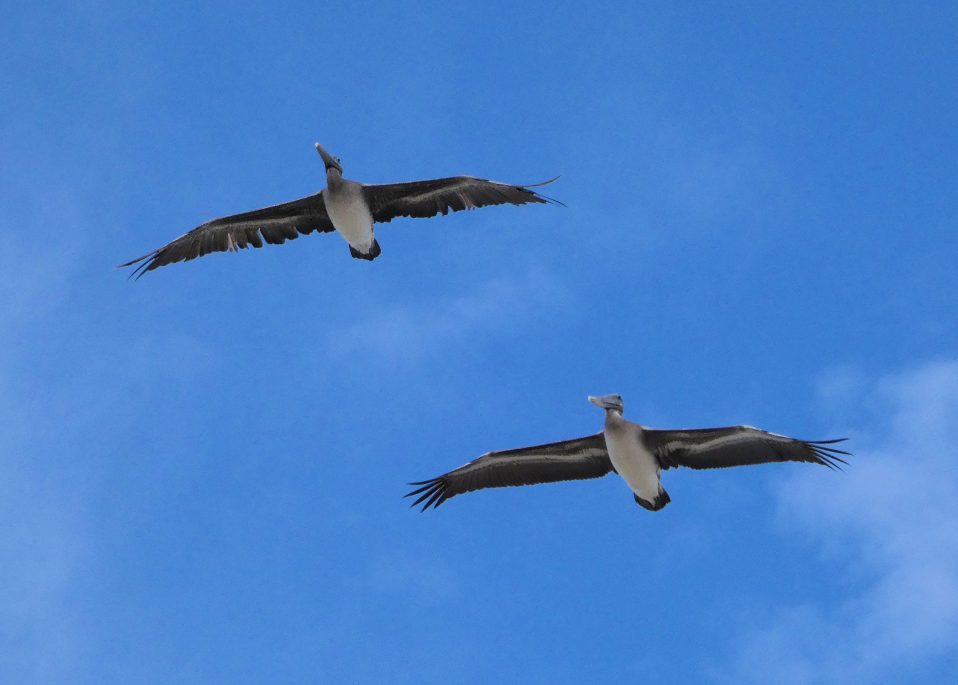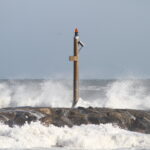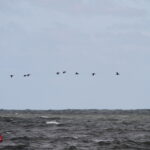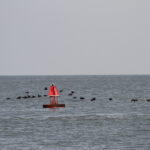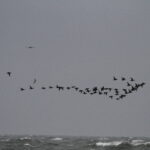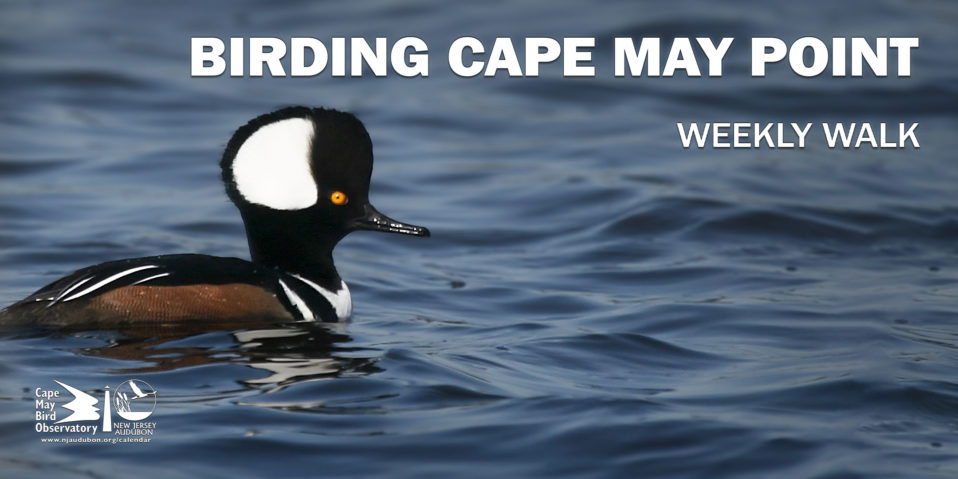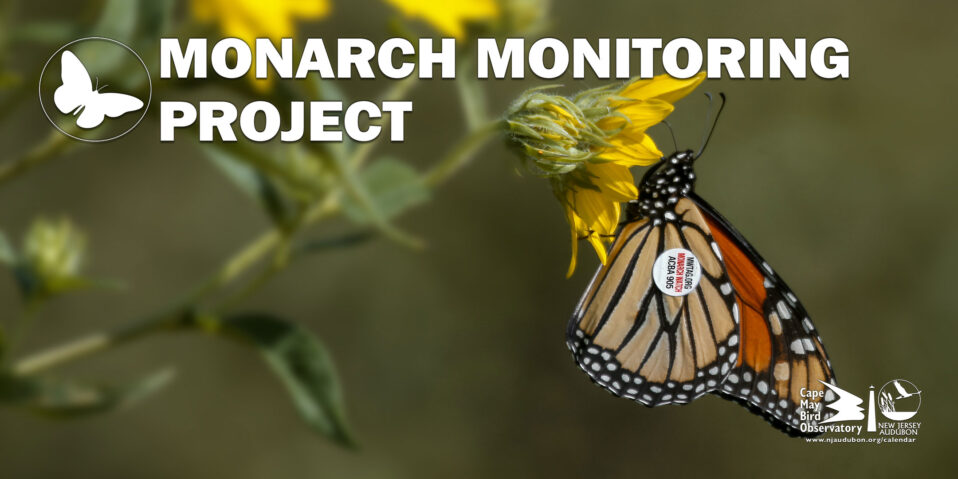Hello everyone!
This is Nick Giordano, and this will be my first year counting the Avalon Seawatch! I am extremely excited to join the Cape May Bird Observatory team and witness the spectacular waterbird migration. I am also excited to be able to see everyone out at the Seawatch and see some incredible birds.
I’ll give you a brief introduction to who I am and my birding experience. I’m from Westchester NY, and I took an ornithology class right before graduating from SUNY ESF in 2018. I started doing waterfowl and gull surveys on the New York City reservoirs soon after graduation and have worked with birds ever since. After working at the reservoirs for a couple of seasons, I was lucky enough to work on Long Island with Piping Plovers and most recently conducted point counts with grassland birds with New Jersey Audubon. I am extremely excited to be able to work for CMBO and get this once in a lifetime experience.

Here is an excellent view of an adult Brown Pelican. Note the white throat and neck, a trait that juvenile Brown Pelicans don’t have.
Enough about me, you’re here for the birds! The first bird of the count was a Common Loon, an excellent way to start any season. The rest of the day was mostly quiet except for the first Black Scoters, good flights of Forster’s and Royal Terns, and some incredible views of Brown Pelicans as they flew directly over the seawatch shack. The next couple days were relatively quiet, which is to be expected early in the season, with a few exceptions. On the evening of 24th, there was a good flight of Snowy and Great Egrets in the inlet, as well as some nice flocks of American Oystercatchers on the 24thand 26th. The evening of the 26th is also when the first Parasitic Jaeger of the season showed up, about 100 meters off the jetty, which was quite the treat.
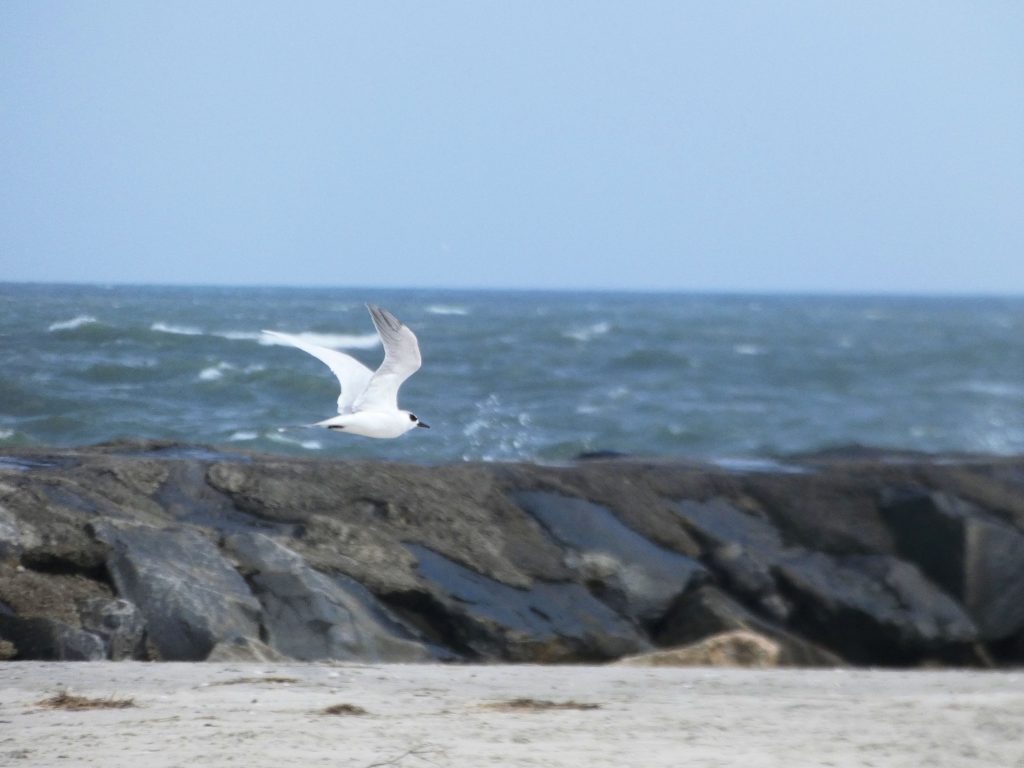
A close look at a non-breeding Forster’s Tern. They can be distinguished at distance from Common Terns by their black ear patch and pale upper wings.
The real action in the first week happened on the 27th, when Tom Reed had good flights of 189 Royal Terns, 525 Laughing Gulls, some Northern Shovelers, American Wigeon, Wood Duck, Blue-winged and Green-winged Teal, and various passerines. The highlight was an early male Common Eider. The 28th also provided 144 Northern Pintail, a Red Knot, and an American Golden-Plover.
The second week saw a ramp up in Double-crested Cormorant and Laughing Gull numbers, as well as Black and Surf Scoter flocks starting to arrive more regularly. The 30th had over 2,300 cormorants and over 1,000 Laughing Gulls on the move, and 151 Monarchs coming off the ocean heading south. One special event that occurred was when a Peregrine appeared overhead, and a Yellow-breasted Chat landed on the platform right next to me seeking cover from the threat. Unfortunately, he did not stick around long enough for a picture. Although the winds came from the NW on October 1st, several small groups of Northern Gannets came close to shore allowing for some great views and comparisons between adults and sub-adults.

An adult (R) Northern Gannet followed by three subadults. The adult has a yellowish head and has white wings with black wing tips, although the shadow of the bird just to the left makes the wing look darker than it really is in this photo. The juveniles are often variable in appearance; first-cycle birds are almost entirely dark, and fourth-cycle closely resemble adults, except with some black on the secondary feathers.
Later in the week, a Brown Booby was found on the 4th by Jerald Reb, and a Whimbrel and a pair of Tricolored Herons found by Melissa Roach. On the 5th, Tom Reed had the first-of-the-season Red-Breasted Merganser and Brant, and even a Piping Plover showed up for a bit. The 6th was a great day for scoters as an ENE wind pushed them along the coast allowing for some incredible views. There were over 1,000 Black, 155 Surf, and our first White-winged Scoter of the season. An adult Brown Booby was briefly seen associating with some gannets before taking off south. Along with nearly 1,000 Laughing Gulls and 2,700 Cormorants, it was good practice for what’s to come later in the season.
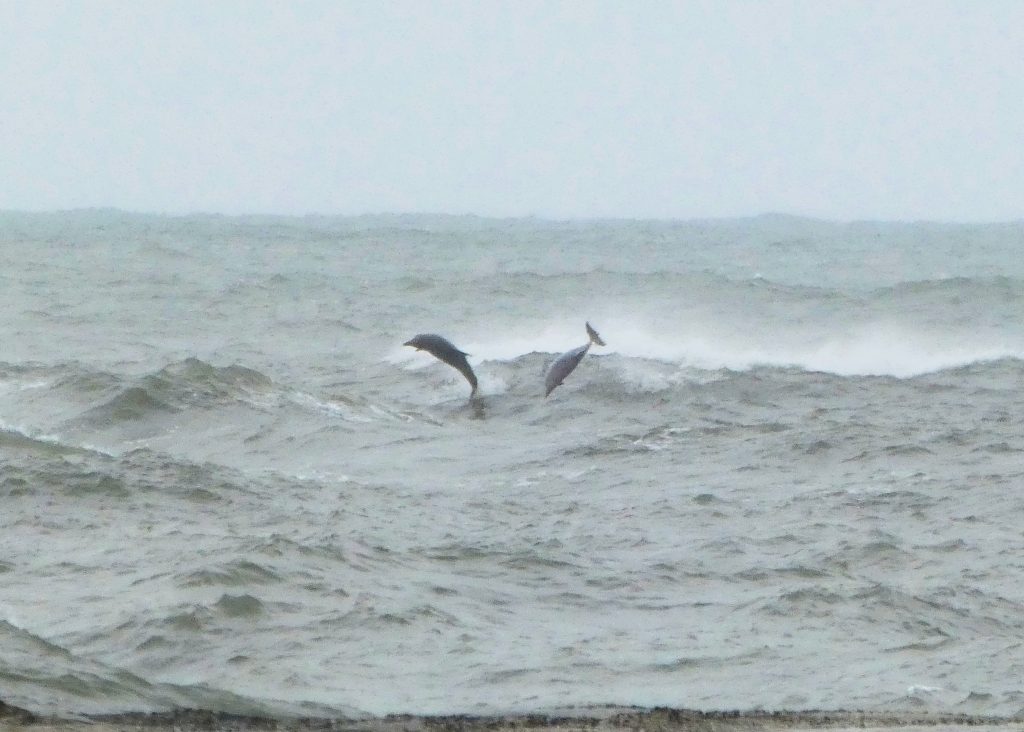
A pod of acrobatic Bottlenose Dolphins seen from the platform was an entertaining sight on an otherwise quiet second day of the count.
These first two weeks have gotten me even more excited about later this month and the rest of the season. Everyone who has stopped by the platform has been great and it has been fun getting to spot good birds and getting to know everyone in the process. Feel free to stop by any time and say hello!
See you out there!
Nick Giordano




